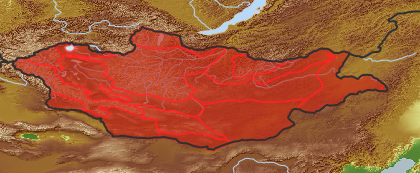| Class: | angiosperms |
| Order: | Lamiales |
| Family: | Scrophulariaceae |
| Editor | S. Rilke & E. Heinrich, July 2014 |
| Herbar: | list records    |
| Synonym: | Veronicaceae (acc. to APGIII) |
| Synonym: | Plantaginaceae s.l. (acc. to APGIII) |
| Description: | Corolla fused, strongly zygomorph, mostly 2-lipped (except Veronica), upper lip 2-lobed, lower lip 3-lobed, corolla often gibbous to spurred. |
| Confuse with: | Lamiaceae, but fruit not 4 lobed and stem generally round. |
| Tax. Comments: | The traditional definition of the Scrophulariaceae is out of date. This family has been largely affected by the application of cladistic in the last decades because the traditional concept is not monophylletic (polyphyletic or paraphylletic).
Since the new taxonomy is morphologically heterogenous and incomplete we use Scrophulariacea s.l. excluding Pedicularis (Orobanchaceae) according to Heywood (2007).
Some authors include also other semiparasites as Rhinanthus in Orobanchaceae.?
Many other genera are also excluded in separate families (Veronica in Veronicaceae = Plantaginaceae) see Olmstead et al (2001). |
| Comments: | Commonly distributed in open grassy places.
|
| Link to Flora of China: | http://www.efloras.org/florataxon.aspx?flora_id=2&taxon_id=10811 |
| open map in a new window |  |
| genus: 13 |
| species: 43 |
| Habit (i)general appearance of a plant | |
| Growth form: (i)Herb, shrub, tree or climber. | herb (i)Herbaceous, erect plant, up to 2m high, mostly with a leafy shoot; if perennial, shoots die to the ground each season, shoots are not woody
example: Artemisia pectinata 
|
| Leaf (i)expanded, usually photosynthetic organ of a plant (including phylloclades) | |
| Leaf development: (i)Structure and development of leaves. | with green leaves (i)Plant with green leaves
|
| Flower (i)reproductive portion of the plant, consisting of sepals, petals, stamens, and pistils | |
| Flower appearance and pollination: (i)General appearance of the flower. | attractive, animal-pollinated (i)attractive and coloured flowers, mostly large, attracting surely animals
example: Trollius, Rosa, Chamaerhodos
|
| Perianth arrangement: (i)Attention: in some plants, flowers may be dimorphic in different ways (dioecious or gynodioecious). If flowers vary, record the characters of the most showy flowers. | double, different (i)Two types of perianth leaves, differently coloured (sepals: outer periant leaves, usually greenish, and petals: inner perianth leaves, usually coloured)
example: Parnassia  
|
| Petal / Tepal fusion: (i)To which degree are the petal leaves connected? Petals sympetalous. | fused (i)petal leaves united, only tips are free (gamopetalous, sympetalous)
example: Linnaea, Adenophora, Stellera
|
| Stamen fusion: (i)To which degree are the stamens fused? Attention: Whereas the pollen sacs itself are often free., their stalks (filaments) may be fused. Here, we count them as fused if they are together over at least one thirth of their length. | fused with a corolla (calyx in Thymelaeaceae) (i)Stamens with perianth leaves at least one third of the length of the filament
example: Orobanche, Salvia, Stellera
|
| Carpel number: (i)Number of carpels (carpel: forming a simple pistil or part of a compound pistil, modified leaf). | 2
|
| Style number: (i)Portion of the pistil connecting the stigma to the ovary. | 1
|
| Ovary position: (i)For entirely or partly fused carpels, describe their position in relation to the insertion point of perianth leaves (best done by doing a longitudinal section of a flower). | superior (hypogynous) (i)Base of carpels attached above insertion point of perianth leaves, carpels free or fused
example: Delphinium, Anemone  
|
| Sex: (i)Distribution of male and female organs among flowers, only most commonly cases. | bisexual, hermaphrodite (i)All or nearly all flowers of a plant with male and female parts
example: Haplophyllum, Chenopodium
|
| Fruit (i)the seed bearing organ, with or without adnate parts; a ripened ovary and any other structures which are attached and ripen with it. Aggregate fruits are handled like simple fruits for determination. | |
| Consistency: (i)Fleshy fruits or dry fruits, see dispersal adaptations for further classification. | dry (i)With a dry outer shell, no fleshy parts, but seed (embryo) could be edible
|
| Type of fruit: (i)Common fruit types (including pseudocarp). | Solitary fruits (i)   
capsule (i)Dry dehiscent fruit, releasing seeds by slits or holes.
example: Poppy, most Caryophyllaceae, Cerastium, a lot of Scrophulariaceae, Iris (oppened capsule looks like Delphinium), Zygophyllum - it is a very common fruit type   
Dehiscent fruits (i)Fruits open along a longitudinale line (except silicula)
|
| Root / shoot below ground (i)plant part below ground (in most cases), including below ground shoots, without leaves | |
| Root type: (i)Organisation of the roots. | allorhizous (i)Plant with a conspicuous tap root, one larger tap root with side roots
example: Dicotyledonae  inherited by order Lamiales: allorhizous inherited by order Lamiales: allorhizous
|